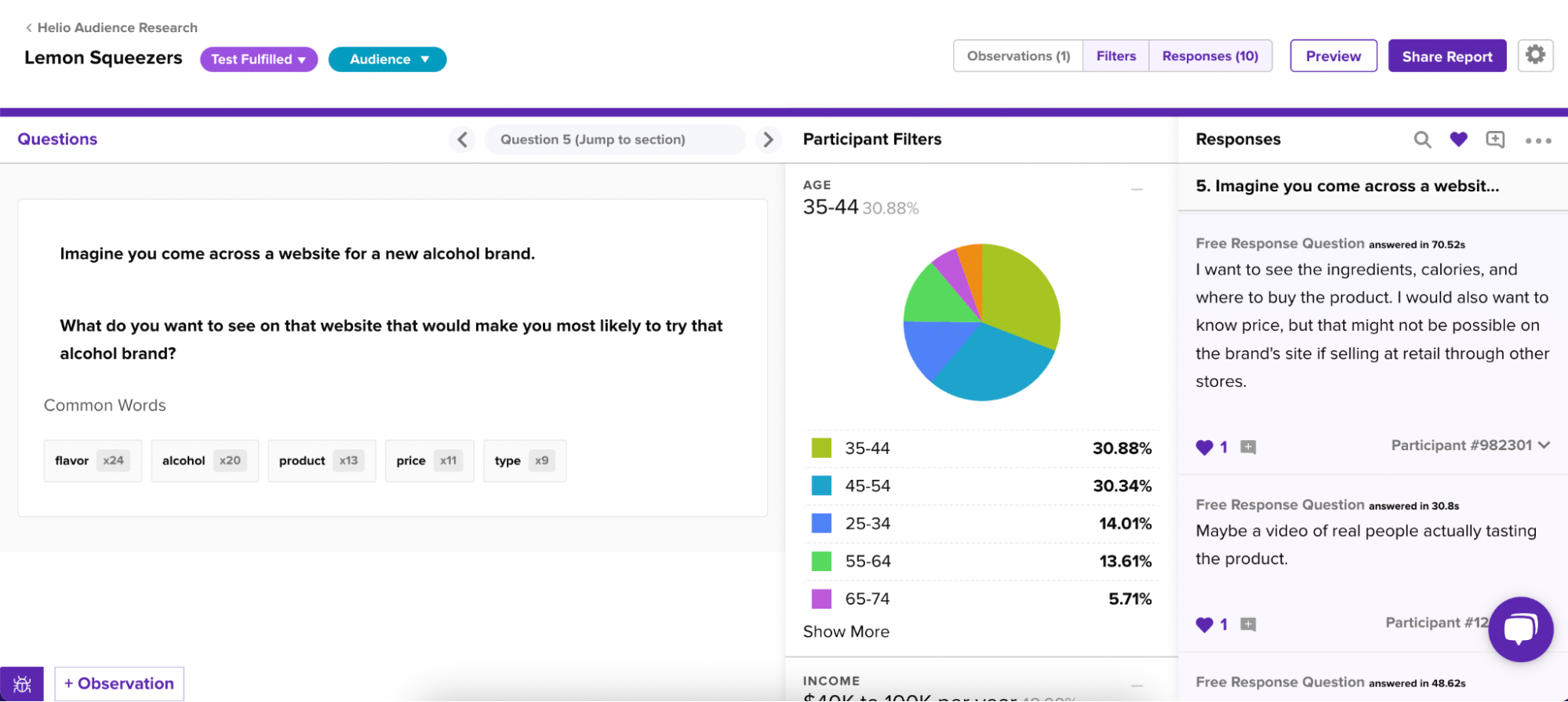The Importance of Marketing Research Surveys: A Comprehensive Guide
Marketing research surveys play a crucial role in every business’s success. They provide valuable insights into customer preferences, market trends, and the overall effectiveness of marketing strategies. In this comprehensive guide, we will explore the various aspects of marketing research surveys, including their definition, purpose, design, conduct, data analysis, and the impact of digital technology on them. By the end of this article, you’ll have a clear understanding of how marketing research surveys can benefit your business and how to implement them effectively.
Intro
🔩 The Nuts and Bolts:
- Marketing Research Surveys Unlock Consumer Insights
These surveys provide an in-depth understanding of consumer behavior and preferences, enabling businesses to tailor their products and marketing strategies effectively. - Data-Driven Decision Making is Key to Success
Through systematic data collection and analysis, marketing research surveys empower businesses with actionable insights for strategic decision-making. - Digital Technology Enhances Survey Efficiency
The adoption of online platforms and social media polls for surveys has revolutionized how businesses gather and analyze customer feedback. - Identifying Market Trends and Opportunities
Surveys reveal emerging trends and untapped market segments, allowing businesses to innovate and stay ahead of the competitive curve. - Evaluating Customer Satisfaction for Long-term Loyalty
Regular customer feedback through surveys helps businesses refine their offerings and cultivate loyalty, ensuring sustained growth and success. - Key Components Ensure Survey Effectiveness
Marketing research surveys’ design, conduct, and analysis phases are critical for obtaining reliable data and achieving meaningful insights. - The Future of Surveys Lies in Technological Advancement
Artificial intelligence and machine learning are set to transform survey methodologies, offering businesses more precise and actionable data.
Understanding Marketing Research Surveys
Before we delve into the details, let’s start by understanding marketing research surveys and why they are essential. Marketing research surveys are questionnaires designed to gather data and feedback from customers or potential customers. The information collected through surveys helps businesses make informed decisions, better understand their target market, and maximize their marketing efforts. Now, let’s explore the definition and purpose of marketing research surveys in more detail.
Definition and Purpose of Marketing Research Surveys
Marketing research surveys involve systematically collecting data and opinions from a target audience to gain insights into their preferences, behaviors, and needs. This information helps businesses identify market trends, customer expectations, and product or service gaps. By conducting surveys, companies can make data-driven decisions, optimize their marketing strategies, and ultimately increase their chances of success.
Marketing research surveys are vital for businesses to understand their customers and target market. They provide valuable insights into consumer behavior, preferences, and attitudes. By gathering data through surveys, businesses can gain a deeper understanding of their customers’ needs and wants, allowing them to tailor their products and services accordingly. This targeted approach helps companies to stay ahead of the competition and build strong customer relationships.
Furthermore, marketing research surveys can also help businesses identify new market opportunities. By analyzing the data collected from surveys, businesses can uncover untapped customer segments or discover emerging market trends. This information can be used to develop innovative products or services that cater to these new market segments, giving businesses a competitive edge.
Key Components of Effective Marketing Research Surveys
Several key components need to be considered to ensure the effectiveness of marketing research surveys. Firstly, it is crucial to define clear objectives and research questions. This helps frame the survey and ensure that the collected data is relevant and actionable. Businesses need to identify what specific information they want to gather from the survey and how it will be used to drive decision-making.
Crafting unbiased questions is essential in addition to clear objectives. The wording and structure of survey questions should be neutral, and leading or biased language should be avoided. This ensures that respondents provide honest and accurate answers, leading to more reliable data. Furthermore, businesses should consider using a mix of closed-ended and open-ended questions to gather quantitative and qualitative data. Closed-ended questions provide specific answer options, allowing for easy data analysis, while open-ended questions encourage respondents to provide detailed feedback and insights.
Choosing the appropriate survey format is also crucial. Online surveys have gained popularity due to their cost-effectiveness and ease of distribution. They allow businesses to reach a large audience quickly and collect data efficiently. However, telephone or in-person surveys may be more appropriate depending on the target audience and research objectives. These formats allow for more in-depth conversations and follow-up questions, allowing for a deeper understanding of respondents’ perspectives.
Lastly, designing an engaging and user-friendly survey layout is essential to encourage higher response rates and more accurate data. A well-designed survey should be visually appealing, easy to navigate, and have a logical flow. Businesses should consider using clear headings, subheadings, and instructions to guide respondents through the survey. Additionally, incorporating visual elements such as images, videos, or infographics can help make the survey more engaging and interactive.
In conclusion, marketing research surveys are crucial in helping businesses gather valuable insights from their target audience. By understanding the definition, purpose, and key components of effective surveys, companies can design and implement surveys that provide actionable data for informed decision-making. Incorporating marketing research surveys into business strategies can lead to improved products, targeted marketing campaigns, and business success.
Build something your buyers *truly* want
Subscribe to Closing the Gap—a newsletter to help makers and doers get closer to customers. Learn more.
We believe in protecting your data. Here’s our Privacy Policy.
The Role of Marketing Research Surveys in Business Strategy
Marketing research surveys are pivotal in shaping an organization’s business strategy. Businesses can gather valuable insights to drive decision-making and improve various aspects of their operations by conducting surveys. Let’s explore two critical areas where marketing research surveys prove invaluable.
Identifying Market Trends and Opportunities
Market trends constantly evolve, and businesses must stay ahead of the curve to maintain their competitive edge. Companies can identify emerging market trends, customer preferences, and changing consumer behaviors through surveys. With this knowledge, businesses can adapt their marketing strategies, develop new products or services, and seize opportunities before competitors.
For example, a clothing retailer may conduct surveys to gauge customer interest sustainably. The retailer can identify a growing trend towards sustainable fashion by asking questions about their preferences for eco-friendly materials and ethical manufacturing practices. Armed with this information, they can adjust their product offerings and marketing campaigns to cater to this demand, gaining a competitive advantage in the market.
Furthermore, marketing research surveys can help businesses identify untapped market opportunities. By asking customers about their needs, pain points, and desires, companies can uncover gaps in the market that they can capitalize on. For instance, a survey may reveal a high demand for affordable yet high-quality skincare products. Armed with this insight, a beauty brand can develop a new line of affordable skincare products, targeting a previously underserved market segment.
Evaluating Customer Satisfaction and Loyalty
A satisfied customer is a loyal customer. Surveying customers about their satisfaction levels not only helps in refining products or services but also aids in building long-term relationships. Understanding customer satisfaction and loyalty levels enables businesses to identify improvement areas, address concerns promptly, and enhance customer retention. Additionally, listening to customers through surveys shows that their opinions are valued, fostering a sense of trust and loyalty.
For instance, a hotel chain may conduct surveys to assess guest satisfaction. By asking guests about their experiences during their stay, the hotel can identify areas where they excel and areas that need improvement. This feedback can enhance the overall guest experience by improving room cleanliness, upgrading amenities, or providing better customer service. The hotel can maintain high guest loyalty and positive word-of-mouth recommendations by consistently monitoring customer satisfaction through surveys.
Moreover, marketing research surveys can help businesses identify the factors that drive customer loyalty. Companies can gain insights into what keeps customers returning by asking customers about their reasons for choosing a particular brand or their likelihood of recommending it to others. With this knowledge, businesses can tailor their marketing strategies to reinforce these loyalty drivers, such as offering personalized rewards, implementing loyalty programs, or providing exceptional customer service.
In conclusion, marketing research surveys are a powerful tool for businesses to gather valuable insights and shape their business strategies. By identifying market trends and opportunities and evaluating customer satisfaction and loyalty, companies can make informed decisions, stay ahead of the competition, and build strong customer relationships.
Designing and Conducting Marketing Research Surveys
Now that we understand the importance of marketing research surveys let’s explore how to design and conduct them effectively. Implementing a well-structured survey ensures reliable data collection and accurate analysis. Let’s break down the steps involved and discuss some best practices for conducting surveys.
Steps to Design a Marketing Research Survey
- Define your objectives and research questions: Clearly outline what you aim to achieve through the survey.
- Select your target audience: Identify and define the specific group of people you want to survey.
- Create the survey questions: Craft clear, concise, and unbiased questions to gather the desired information.
- Choose the survey format: Determine the most suitable format, such as online surveys, mail surveys, or telephone interviews.
- Design the survey layout: Ensure the survey is visually appealing, easy to navigate, and compatible with various devices.
- Pilot test the survey: Conduct a trial run of the study with a small group to identify any issues or areas for improvement.
- Distribute the survey: Use appropriate channels to reach your target audience and maximize response rates.
Best Practices for Conducting Surveys
- Keep the survey short and focused: Respect your respondents’ time by keeping the study concise and relevant.
- Offer incentives: Encourage participation by providing incentives like discounts, sweepstakes entries, or free samples.
- Ensure confidentiality and anonymity: Assure respondents that their personal information and responses will be confidential.
- Follow up with reminders: Send reminder emails or notifications to non-respondents, reminding them to complete the survey.
- Analyze and interpret the data: After collecting the survey responses, analyze the data using appropriate statistical techniques and interpret the results.
🚀 If you’re using Helio
Implement a well-structured survey, ensures reliable data collection and accurate analysis.

Collecting survey data is only the first step; the true value lies in analyzing and interpreting the results.
Analyzing and Interpreting Survey Data
Collecting survey data is only the first step; the true value lies in analyzing and interpreting the results. This section explores some techniques for data analysis and discusses how to make sense of survey findings.
Techniques for Data Analysis
Statistical analysis tools allow businesses to make sense of large survey datasets and extract valuable insights. Techniques like segmentation, regression, and factor analysis help identify meaningful patterns, relationships, and trends within the data. By employing these techniques, businesses can draw actionable conclusions and make informed decisions based on the survey results.
Making Sense of Survey Results
Interpreting survey results involves more than analyzing numbers and figures. It requires understanding customer perspectives, identifying emerging themes, and finding the story behind the data. Visualizing data through graphs, charts, and infographics can help effectively communicate survey results to stakeholders and facilitate decision-making.
The Impact of Digital Technology on Marketing Research Surveys
Technology has revolutionized how businesses conduct marketing research surveys in this digital age. Let’s explore two significant aspects of this digital transformation: online surveys and social media polls.
Online Surveys and Social Media Polls
Online surveys offer businesses a cost-effective and efficient way to reach a large audience quickly. Businesses can easily design, distribute, and collect responses from respondents worldwide by leveraging online survey platforms. Social media polls have also gained popularity due to their interactive and engaging nature. Social media platforms provide businesses with a vast user base, making gathering opinions and insights in real-time easier.
The Future of Marketing Research Surveys
As technology evolves, so will the methods and techniques used in marketing research surveys. Artificial intelligence, machine learning, and advanced analytics will likely play increasingly significant roles in survey design, data analysis, and decision-making. Embracing these technological advancements will allow businesses to collect more accurate and actionable data, driving their marketing strategies to new heights.
In conclusion, marketing research surveys are an indispensable tool for businesses striving to succeed in today’s competitive landscape. Businesses can make informed decisions, identify market trends, and enhance customer satisfaction by understanding the definition, purpose, design, and analysis of surveys. Embracing digital technology opens up new avenues for conducting surveys and optimizing the overall survey process. With this comprehensive guide, you are now equipped with the knowledge to leverage marketing research surveys effectively and drive your business forward.
Marketing Research Survey FAQs
A marketing research survey gathers data and feedback from customers or potential customers to understand their preferences, behaviors, and needs. This information helps businesses make informed decisions, optimize marketing strategies, and increase their chances of success.
Marketing research surveys are crucial because they provide valuable insights into consumer behavior, preferences, and attitudes. This enables businesses to tailor their products and services to meet customer needs better, stay competitive, and build strong customer relationships.
Businesses can uncover untapped customer segments or emerging market trends by analyzing data collected from surveys. This information helps develop innovative products or services that cater to these new market segments, providing a competitive edge.
Effective marketing research surveys require clear objectives, unbiased questions, an appropriate survey format, and a user-friendly layout. These components ensure the survey is engaging and yields accurate, actionable data.
Digital technology, especially online surveys and social media polls, has made it easier and more cost-effective for businesses to reach a broad audience and collect data efficiently. This has enhanced the speed and accuracy of feedback collection.
Advancements in artificial intelligence, machine learning, and analytics are likely to shape the future of marketing research surveys. These technologies will enable more sophisticated data analysis, leading to more accurate and actionable insights.
To ensure high response rates, businesses should keep surveys short and focused, offer incentives, assure confidentiality, and send reminders. Engaging and respecting respondents’ time encourages participation and yields more reliable data.



